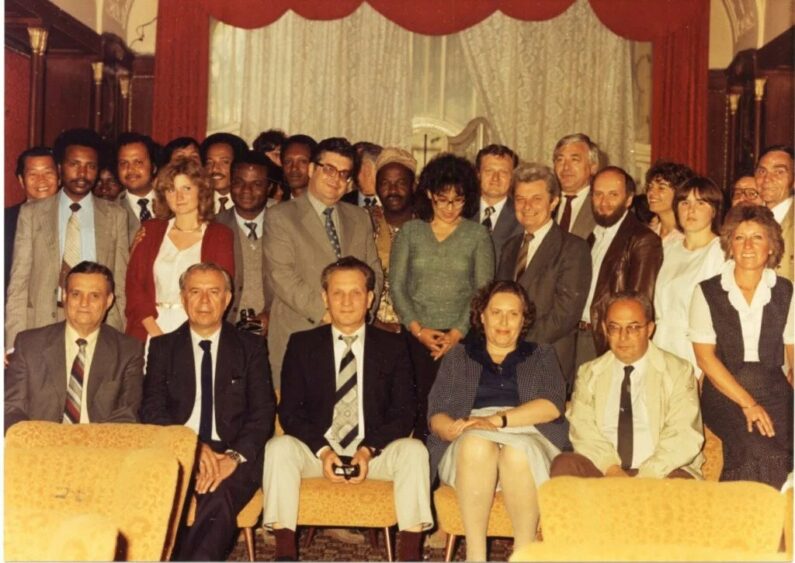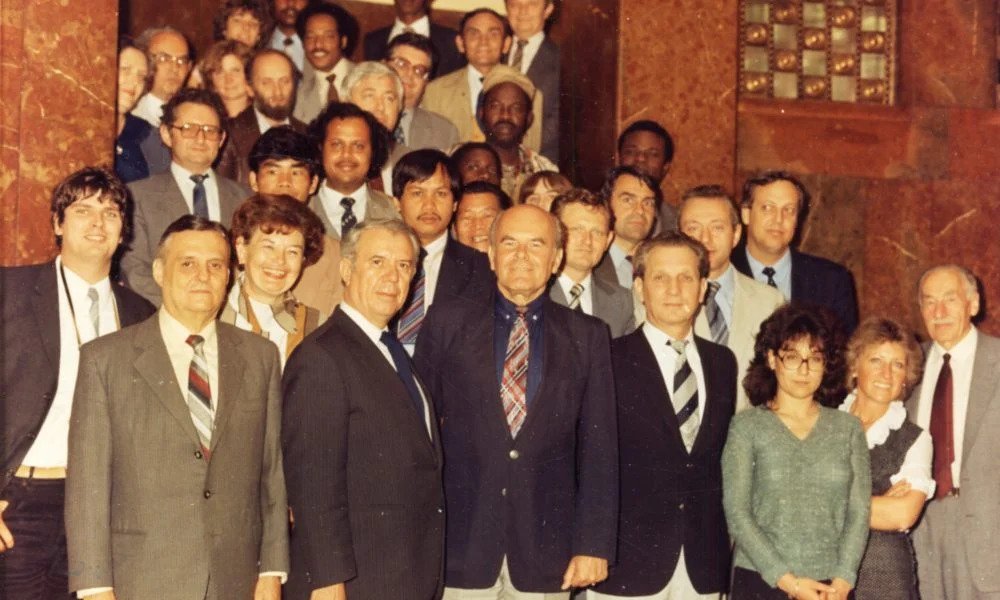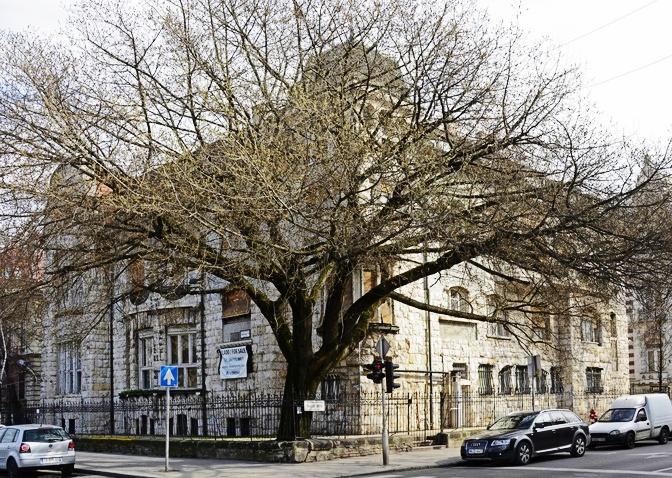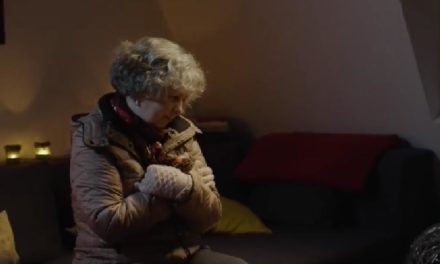The historian Zsuzsanna Borvendég's series was originally published on the PestiSrácok website, but there are certainly those who missed it. But those who haven't read all the parts should also read it again. Knowing the whole picture, can we understand how we got here?
The elite of emerging countries had to be trained, who could later become leaders, officials, and media directors of their country, that is, the ideological re-colonization of countries that were just freed from the colonial yoke of the West, but still vulnerable, began with full steam - among others - with the help of Hungarian journalists.
The Soviet Union defined the independence struggles against the colonial countries as anti-imperialist revolutions and tried to provide as much help as possible to the African peoples fighting for their freedom. The goal of Brezhnev's foreign policy was for the newly established national governments to strengthen the communist bloc on the battlefield of the Cold War and to prevent American interests from asserting themselves in the region.
Rolling dollars to Africa
Innumerable means were deployed, in addition to the provision of direct financial resources and open and violent propaganda, they were able to list the entire range of illegal activities, and Hungary could not withdraw from this either. In addition to the delivery of weapons and the installation of other military tools and equipment, we sent thousands of specialists and technology for military and civilian use to the black continent until the end of the eighties, the financing of which had to be managed by the Hungarian budget.
In 1966, the Ministry of Finance prepared a report on the form in which we take our part in the aid provided to the developing world. The interest rate on loans provided by the Magyar Nemzeti Bank was only 2.5%, instead of the usual 6% for commercial loans. The application of the low interest rate is a significant relief in itself, but in addition, the affected states also received discounts in terms of repayment. It is indicated, for example, that they did not even have to pay back the money transferred to them in foreign currency, but we provided them with the opportunity to settle their debts by delivering their own goods. If by chance a payment installment arrived in convertible currency, the Hungarian state used it to finance the import of goods from the debtor country. And to top it all off, most of the parts for the various equipment shipped to developing countries were sourced from Western countries for hefty sums.
Politically correct NGOs
Among the more sophisticated and less direct methods was the idea of making the political elite of the liberated countries loyal to the Soviet Union. Here, too, there were a million possibilities, from bribery to blackmail, but in the longer term, ideological education is obviously the most effective. To this end, courses were organized in many countries from the very beginning of the 1960s, and special attention was paid to attracting and training local journalists, and it was even a priority that the press products appearing in the liberated colonies be under Bolshevik influence from the start. The propagators of the Bolshevik ideology had several decades of experience in leading the people and influencing the masses, the technique of building the network and the working methods were ready.
19–22 May 1961 organized by NÚSZ, the first Pan-African Journalist Conference was organized in Bamako, the capital of Mali. Moscow supported the event with millions of rubles, with the aim of which was to midwife the birth of mass media in countries on the way to decolonization and to gain significant influence in them. At the conference, the Pan-African Journalists' Union was founded and various grants were voted to enable the publication of press products from the participating African countries. They also established an African news agency in addition to providing state-of-the-art technical equipment.

Members of a Budapest NÚSZ course Géza Rybka sits in the middle of the first row (collected by Zsuzsanna Borvendég)
The most urgent issue was the organization of journalistic training , but not so that the professional standards of the newspapers that would be born in the near future would be impeccable, but so that the scribes working at the newspapers could sufficiently manipulate the public opinion of their country after adequate ideological training , thus serving the Bolshevik world empire. Hungary took a pioneering role in this task.
When the king is naked
August 6–12, 1962 Budapest hosted the fifth congress of the NÚSZ, which featured the persecution of journalists. They noted with regret that in many parts of the world, their colleagues committed to freedom of the press are suffering in large numbers in prisons and concentration camps as a result of the oppression of the imperialist and colonialist powers. Let's not forget: in Hungary in 1962, the freedom fighters of the revolution that had been bloodied and avenged only a few years ago were still in prisons en masse! And last week, in this series, you could also read about the drastic measures with which journalists were "regulated" after the revolution. But, of course, the issue of socialist "press freedom" was not on the agenda , just as they did not demand the release of the famous Hungarian journalist Gyula Obersovszky.

Group photo of the graduates of the Budapest NÚSZ course. In the picture, József Pálfy in the middle, next to him in a striped tie is Géza Rybka, the director of the school (collected by Zsuzsanna Borvendég)
However, the complete lack of press freedom did not stop the course of the congress, the period that followed the end of the post-revolutionary reprisals was particularly beneficial for the NÚSZ to implement its plans. The restoration following November 1956 silenced and then selected press workers with a heavy hand, allowing them to entrust the task of self-censorship to party-loyal editors-in-chief and journalists who were perfectly aware of their duties. The university journalism training was abolished, so the professional practices could only be learned in the MÚOSZ courses, i.e. both the representatives of the profession and the structure of education were perfectly suited to open a cadre training school essential for the ideological colonization of the Third World in Budapest.
KGB headquarters in Budapest
Even before the establishment of the school, NÚSZ carried out educational activities in the third world, but the organization of its outsourced courses was much more difficult than if the students had been transported to a permanent location, where, in addition, it was easier to build on the secret service. The congress made the decision, and a year later, in September 1963, education began at the school of the International Organization of Journalists , the International Journalist Training Center, which, in addition to the political training of the black African intelligentsia, also provided the opportunity to select, recruit and train the KGB third world agents. The students were transported to the Hungarian capital by Soviet, Polish and Czechoslovakian ships and planes.
The school started in September 1963. It was managed by a three-member committee, the chairman of which was the general secretary of MÚOSZ - until 1973 Norbert Siklósi -, one member was the director of the institution, and the other member was delegated by NÚSZ. The director of the institute was appointed by the general secretary of the NÚSZ. The financial background of the operation and education was theoretically provided by the NÚSZ, but archival sources allow us to conclude that the budget of the MÚOSZ was also burdened by the maintenance of this secret service cover body.
The school's primary goal was not to impart professional knowledge, but to research tips. This technical jargon meant nothing more than that the KGB was constantly looking for and organizing among the students sent to school those candidates who it hoped would fill a useful position upon returning to their home country. Of course, Hungarian intelligence was also looking for its potential agents among the students, recruitment was also done in many cases; we know of several African and Arab students who, after returning to their country, kept in touch with state security for years.
A committee member delegated by NÚSZ refers to the permanent presence of the KGB. Pavel Jerofeyev was the secretary of NÚSZ, and although we don't know anything more about him, it can be seen from the documents that he traveled to Moscow quite often, and not only had an insight into matters related to the school, but also had direct access to the intelligence base operating within MÚOSZ. also in the operation of the Press Residence.
Agent-alumni ("alumni") in the wider world
The first international course lasted from January to May 1964. Until January 1971, the NÚSZ organized a total of ten training sessions in Budapest, lasting between three and six months. They tried to keep in touch with the graduated students on a regular basis, for example by asking the former students in the form of a circular letter to write information about their current workplace and position for the Hungarian Press Studies Association, and to send an article or two to the school's yearbook. The data was obviously needed to assess who was in a position where the state security could use it to perform agent tasks. After the orientation, they evaluated the answers and made a list of people whose cooperation they could potentially count on and it was worth devoting time and money to approach them.
Courses were not only organized in Budapest, but teachers were also sent to the target countries several times. In October 1970, for example, they agreed to hold a four-week seminar in Lagos. When selecting the two Hungarian instructors, the primary consideration was that they should not only be among the teachers of the International Journalism Training Center, but should also be able to perform the operative tasks of the Press Residency, i.e. intelligence gathering. Based on this consideration, György Kalmár , a senior employee of Népszabadság, and Jenő Bochkor , a journalist at MTI, were recommended for the task as "old operational contacts" (meaning: reliable comrades who have worked for state security for a long time).
The International Journalism Training Center operated in Budapest until the system change; its last director, Géza Rybka, was a resident of the state security intelligence. At that time, the institution had 120 employees, the teaching staff numbered only 24, the rest were members of the "technical" staff (KGB? State security?).
Source: PestiSrácok
Author: historian Zsuzsanna Borvendég
(Header image: MTI archive )













